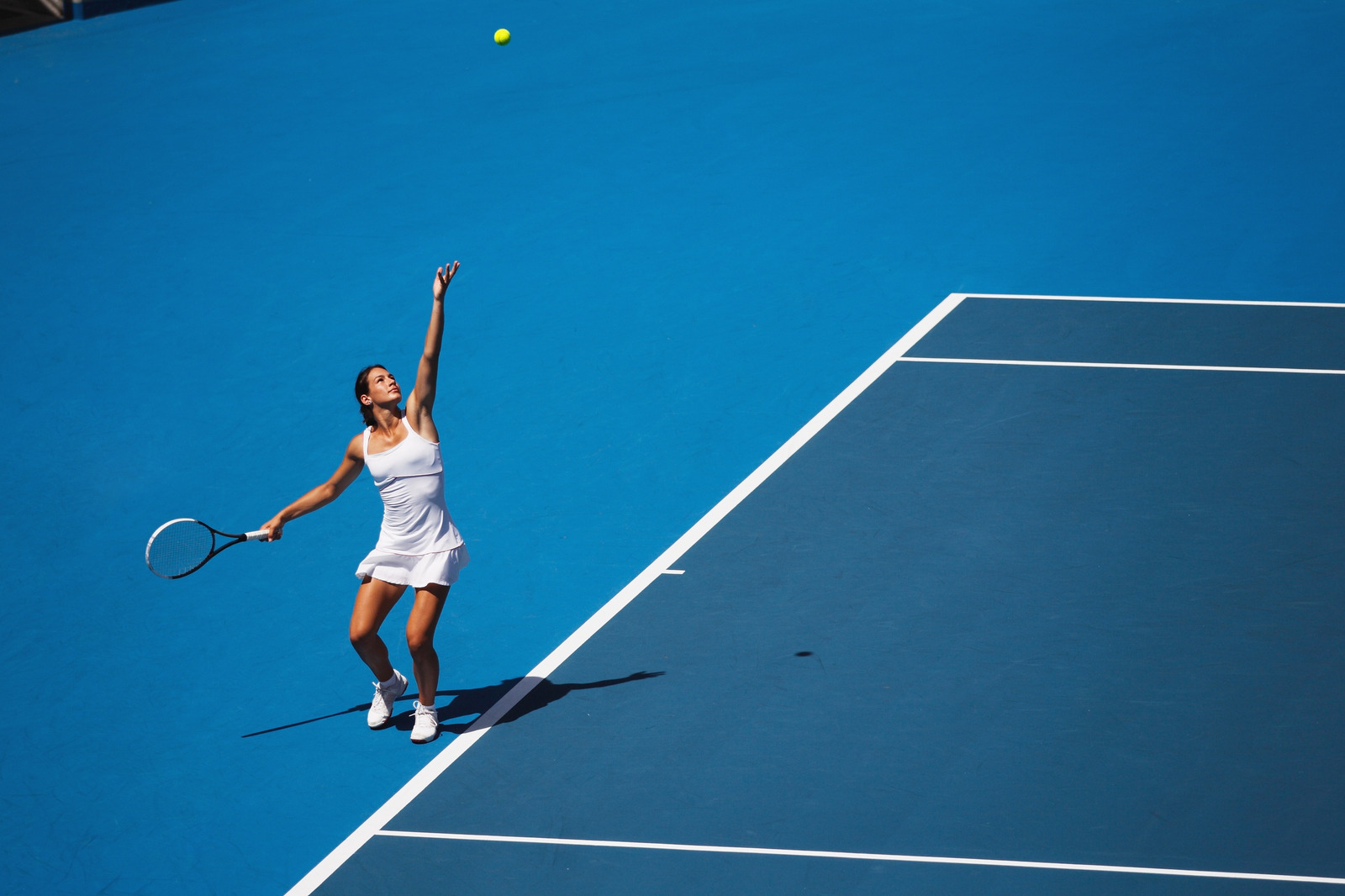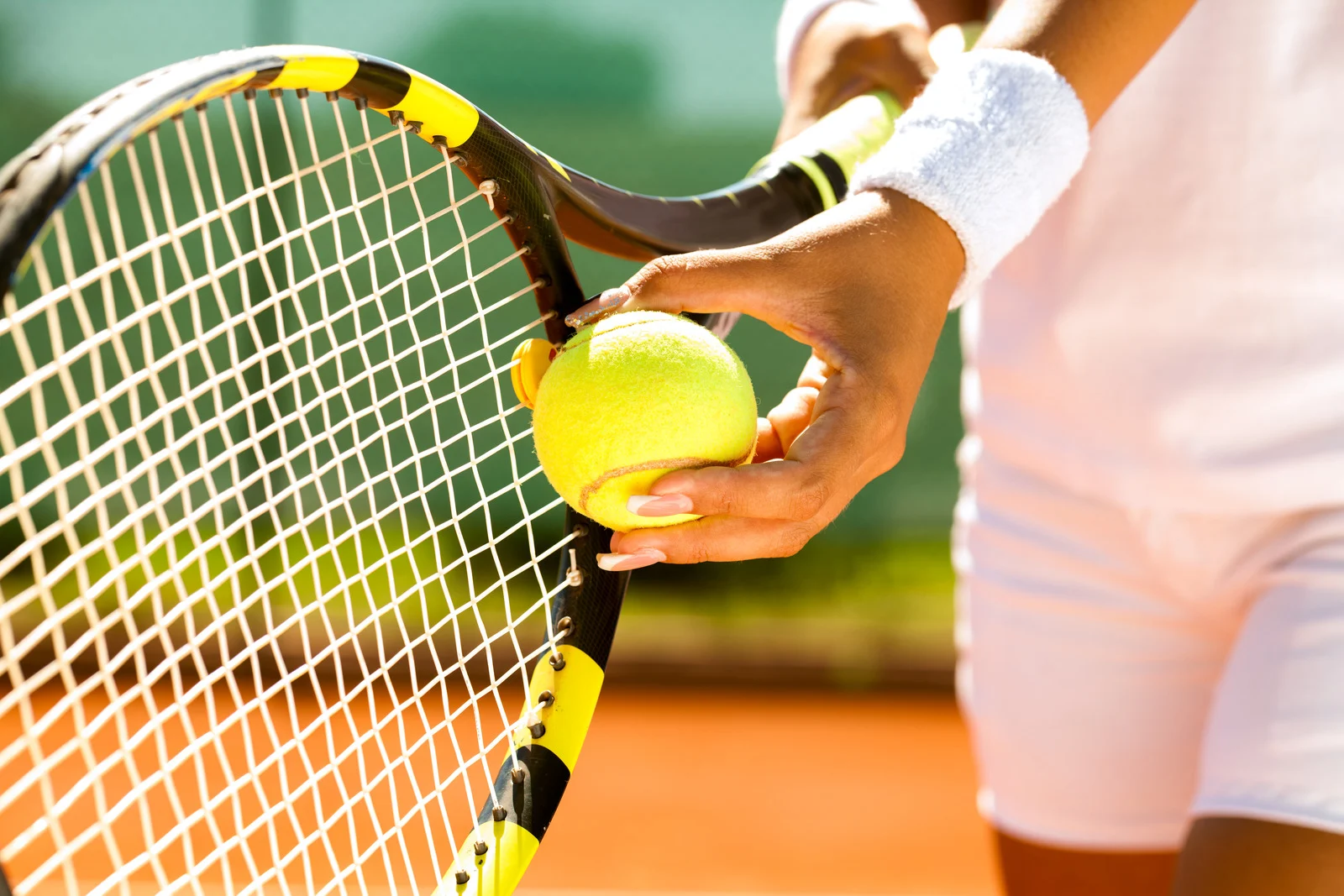Rules of Tennis Serve
Tennis, a quick and exciting sport, offers a great way to stay active while having fun. One of the most important aspects of the game is its serve technique. Whether you want to engage in a casual match with friends or compete in professional tennis tournaments, understanding the rules of the serve is essential.
The serving order determines which player has the opportunity to start the game, and the serving player must hit the ball within the designated area on the tennis court. With different types of serves, players have the chance to strategize and gain an advantage in a point. So, let’s delve deeper into the intricacies of tennis serve and enhance our tennis skills on the court.
Tennis Serve Rules Singles
The rules governing a tennis singles serve in the sport of tennis are simple but strict.
- Every point starts with a serve which must be made from behind the baseline on the right side of the court for the first point and then alternates from there.
- A valid serve must land within the opponent’s service box, without touching the net, and should take no more than one bounce before it reaches the other side.
- If a player fails to make a valid one two times consecutively, that results in a double fault and the point goes to the opposing player.
- It is important to note that if 2 consecutive serves lands outside the lines, only the second serve is a fault.
- Players must also wait for their opponents to be ready before they can make their first serve.
The server has two chances to hit a good serve and follow through with a legitimate play.

Tennis Serve Rules Doubles
The rules of serving in doubles tennis are the same as in singles, with some special considerations.
- When serving, two players on each team must serve from diagonally opposite sides of the court.
- Each player is allowed two attempts to get the ball into play. If the serving team fails to make both serves, then the receiving team scores a point.
- When preparing, the server must stand behind the baseline and between the center service line and the sideline.
- The player must remain inside the court until the ball is served. If the player steps outside the court before the ball is served, it is considered a fault.
- The ball must be served over the net and land within the boundaries of the receiving team’s court. If the server fails to meet this requirement, or if the ball goes out of bounds, then the receiving team will score a point.
Overall, understanding and adhering to the rules of tennis doubles serve can ensure that players have a fair and enjoyable experience on the court. By taking careful aim and executing a crisp hit, players can avoid unnecessary faults and keep the game moving forward.
Tennis Toss Rules
The game of Tennis Toss is simple to learn and great for competitive fun. The basic rules are straightforward: each player attempts to hit a tennis ball across the net, aiming to land it within the designated boundaries on the opposite side. If the ball hits the ground outside of the boundary lines, it is considered out-of-bounds. The first player to score three points wins the game, but only if they lead by two clear points.
Every bounce must be returned with a fresh toss. Players may serve from either court on their own turn, and after service they may switch sides. All serves must be made below the shoulder or waist level and must remain in bounds at all times. Out-of-bounds serves may result in a point deduction.
Finally, Tennis Toss is a friendly competition! Refrain from throwing your racket or displaying other belligerent behavior; instead, show good sportsmanship and embrace the enjoyable spirit of the game.
Rules – Foot Faults, Lets, & Hitting Opponents
In addition to the standard rules of the sport, there are a few specialized regulations that require adherence.
- Foot faults occur when a player’s foot trespasses beyond the baseline during serves. The penalty for a foot fault is usually to lose the point.
- A let, on the other hand, refers to a situation where the server hits the ball and it does not land properly due to an external factor, such as wind or a distracted opponent. In this case, the point may be replayed.
- Finally, players are prohibited from hitting their opponents with the ball, whether intentionally or unintentionally. Such behavior can result in warning or even disqualification depending on severity. All players should familiarize themselves with these specialized tennis rules to ensure full compliance during games.
Tennis Scoring System
Tennis is a sport of strategy and skill, and the scoring system plays a pivotal role in the structure of the game. Every great match starts with love-all and ends in glory.
Beginning at 0-0, or love-all, each player serves twice before points start to count. Points are scored when the opponent fails to keep the ball in play— known as fault. The player can win a point by either hitting the ball into the court and beyond their opponent’s reach or forcing them to commit a fault.
Every time a point is won, players receive 15, 30, and 40 points for their score, depending on whether their score is 0-15, 15-30 or 30-40. If both players have an equal score of 40-40 then it’s an advantage either way—scores that follow are known as deuce and the player with the advantage has to score two more points consecutively to emerge victoriously.
So grab your racquet and take it to the court; scoring in tennis follows an intriguing pattern that rewards technique and finesse!
Basics of a Tennis Serve
The tennis serve is an art form that requires a combination of power, accuracy, and finesse. Grasp your racket with two hands; one at the throat and the other at the bottom. Your dominant hand should grip the racket at the throat, closest to your body. Stand sideways to your opponent’s court with your feet shoulder-width apart for balance. Remember: the width of your stance sets you up for success!
Now, take a deep breath and prepare to launch. Your toss should occur just above the opposite shoulder. Trace a small arch in the air, then thrust the racket head through the ball for power and spin. Make sure to aim for the centre mark of the service box to improve your chances of hitting a good serve!
Finally, make an explosive finish by extending your arm and pointing it towards your target. You’ll know you’ve perfected this step when you can feel the energy flowing from your fingertips to your target before contact is even made. With practice, you’ll soon be able to throw low-flying stunners past your opponent! Try it out and find your perfect serve!
Singles Tennis Serve
The single’s tennis serve: a powerful weapon in the game of tennis, capable of delivering swift and decisive blows. It begins with an explosive burst of energy as the tennis racquet is whipped through the air – the force generated by the arms and legs transferring to the strings, sending a projectile hurtling towards its intended target. The trajectory, height and spin of each shot are meticulously calculated and, if executed correctly, can leave opponents helpless.
The single’s serve demands precision and power; a harmonious mixture of analytics and athleticism. For those who master it, they will find themselves reaping the rewards on the court, holding their opponents in an unyielding grip. With practice and dedication, the virtuous circle of improvement can be accessed, leading to greater success and satisfaction. Step up to the baseline – let your serve do the talking.
The Doubles Serve
The doubles serve- a moment of sheer athletic brilliance, where the art of tennis is transformed into a riveting spectacle. Two players working together in unison to deliver an intricate sequence of volleys and dropshots, each movement more precise than the last. The court reverberates with the echoes of the racquet strikes, creating a symphonic masterpiece of power and control.
As the rally reaches its crescendo and the ball sails beyond reach, a collective gasp of awe rises from the audience, conveying their admiration for such an incredible display. For this brief moment, the players are connected through their shared mastery of the doubles serve—a timeless display that will continue to evoke awe and wonder well into the future.

LET in Tennis Serves
When it comes to tennis serves, ‘Let’ is more than just a word. It’s an important part of the game that can determine the outcome of the point. A let occurs when there is an interruption during the service motion and this can be a result of various factors: obstruction from another player, a racquet or ball coming into contact with the net, or the serve being otherwise disrupted. When a Let is declared, the point does not count and the server gets to replay their serve.
But a Let is more than just a convenient do-over; it’s a moment of opportunity for players to take stock of the situation, see what might have gone wrong, and make adjustments accordingly to ensure a powerful, successful serve in their next attempt. So go ahead and take your next serve as a chance to be better – listen to that little voice telling you ‘Let’s get it right this time!’
Tossing or Throwing the Ball up For a Serve
Tossing the ball up for a serve is more than just a simple gesture. It’s an opportunity to get into your zone, to take a moment and prepare yourself for the challenge ahead.
Feel the ball between your fingertips as you hold it for a second. Gently toss it up in the air, allowing time for your eyes to focus on its trajectory as it rises and falls. When it reaches the peak of its arc, it hangs still in mid-air — suspended in space and time.
In this instant, imagine yourself hitting the perfect serve – one that rockets down the court and leaves your opponent unable to react. Anchored by this image, launch your arm forward as if you were striking a match and the ball becomes the spark that ignites the fire of victory within you.
This is what it feels like to stand on top of the world and send the ball off with finesse. So go ahead — toss it up with confidence and watch your dreams turn into reality.
Conclusion
In conclusion, when getting started with tennis rules, it is important to understand the serving aspect of the game. Players gets to choose to serve first or let their opponent serve first. According to the International Tennis Federation, the rules state that the serve must go over the net and lands in the correct service box across the court. If the serve hits the net but still lands within the service box, it is called a let and the player gets to serve again. However, if the serve hits the net and fails to go over, it results in a fault and the next tennis serve goes to the opponent.





